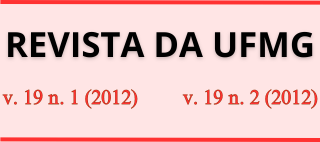O universo vivo
DOI:
https://doi.org/10.35699/2316-770X.2012.2718Resumo
The standard cosmological model suggests that after the “Big Bang”, 14 billion of years ago, the universe entered a period of expansion and cooling. In the first one millionth of a second appear quarks, glúons, electrons and neutrinos, followed by the appearance of protons and neutrons. In this paper, we describe the “cosmic battle” between gravitation and energy, responsible for the lighter chemical elements and the formation of the stars. We describe the thermodynamics of irreversible processes of systems which are far away from equilibrium, a route that is followed by the universe, seen as a living system.
Referências
BOSSEL, H. Exergy and the Emergence of Multidimensional Systems In: JORGENSEN, S. E. (Ed.). Thermodynamics and Ecological Modelling. Chelsea, Mich: Lewis Publishers, 2001. p. 191-210.
BRADFORD, C. M. et al. The Water Vapor Spectrum of APM 08279+5255: X-Ray Heating and Infrared Pumping over Hundreds of Parsecs. The Astrophysical Journal Letters, Austin, v. 741, n. 2, L. 37, p. 1-6. 10 nov. 2011.
HARTOGH, P. et. al. Ocean-like water in the Jupiter-family comet 103P/Hartley 2. Nature, London, New York, Tokyo, v. 478, n. 7368, p. 218-220, 13 out. 2011.
JORGENSEN, B.R.; JORGENSEN, U.G. Videnskaben eller Gud? 3 ed. Copenhague Danmark Radio, 2005.
JORGENSEN, S. E. A Tentative Fourth Law of Thermodynamics. In: ___________ (Ed.). Thermodynamics and Ecological Modelling. Chelsea, Mich: Lewis Publishers, 2001. p. 303-348.
JORGENSEN, S. E.; SVIREZHEV, Y. M. Towards a Thermodynamic Theory for Ecological Systems. Amsterdam: Elsevier, 2004.
JOU, D.; CASAS-VÁZQUES, J.; LEBON, G. Extended Irreversible Thermodynamics. SpringerVerlag, Berlin, Heidelberg, New York, 1996.




